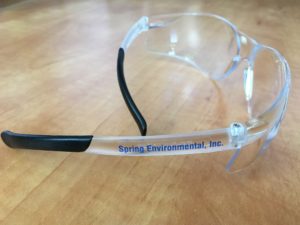The August HAZWOPER Challenge is now closed. Thank you for participating. Please come back September 1st for our next HAZWOPER Challenge!
Category Archives: Announcements
July is Bringing the Heat!
According to an EPA study, on average 34 workers across all industries die every year from extreme heat exposure. Extreme heat events have become more common across the globe and the number and intensity of the events are forecasted to increase. Now is the time to educate yourself and workers on the dangers of extreme heat and the steps you can take to guard against exposure. To get started, consider the following:
- Provide training on the signs and symptoms of heat exposure and treatment.
- Provide a sufficient amount of drinking water to exposed workers.
- Provide adequate shade.
- Provide work/rest cycles for employees exposed to temperatures above the action levels.
- Utilize the buddy system and establish communications with workers.
For more information in Washington State, consult the Outdoor Heat Exposure rules associated with your industry.
• General industry: WAC 296-62-095 through 09560
• Agriculture: WAC 296-307-097 through 09760
• Firefighters/Fire Departments: WAC 296-305-05004
• Wildland Firefighters: WAC 296-305-07004
The following resources are also provided to aid employers and decision makers in assessing the health risks of extreme heat.
Heat.gov
Heat Safety Tool app
July HAZWOPER Challenge
June HAZWOPER Challenge
BREAKING NEWS…2024 EMERGENCY RESPONSE GUIDEBOOKS HAVE ARRIVED!

Be the first in your office to have the new 2024 Emergency Response Guidebook (ERG) by registering for one of our upcoming HAZWOPER or Hazardous Material Transportation courses. Visit our registration platform to see our schedule and register for an upcoming class.
May HAZWOPER Challenge
It’s Warming Up, Time to Review the Outdoor Heat Exposure Rules!
Washington State Department of Labor & Industries’ (L&I) permanent rules for Worker Outdoor Heat Exposures went into effect July 17, 2023. With predicted warmer and drier seasons ahead, make sure you are protecting your employees in accordance with the standards.
The year-round standards apply when the action levels outlined in Table 1 – 52 degrees Fahrenheit for Non-Breathable clothing and 80 degrees Fahrenheit for all other clothing – are exceeded. Employers and employees should educate themselves on the triggering events and what actions must be taken to ensure worker safety. Some key aspects to consider include:
• Definitions
• Response to heat induced illnesses
• Information and Training program requirements
• Shade requirements
• Acclimatization guidelines
For more information, check out the Be Heat Smart (wa.gov) for access to the standards and resources such as posters, videos, and training materials.
* The Federal rulemaking for Heat Illness Prevention in Indoor and Outdoor work settings is currently in the Pre-rule stage of development.
March HAZWOPER Challenge
2024 NEW OSHA 300A Posting and Reporting Requirements
Hello 2024! Did you know there are new requirements for companies to electronically submit workplace injury and illness data to OSHA? There is and it’s also time to prepare, certify and post your OSHA 300A Annual Summary of workplace injuries and illnesses in your workplace. Under the new rule, the following establishments have to submit electronically:
• Designated industries that had a peak employment of 100 or more employees during the previous calendar year that are listed in Appendix B to Subpart E of 29 CFR Part 1904.
• Establishments with 20 to 249 employees in certain industries listed in Appendix A to subpart E of 29 CFR Part 1904.
• Establishments with 250+ employees in industries that must routinely keep records.
If employers in State Plan states (e.g. Washington) have questions about their obligation to submit injury and illness information, please contact your State Plan office.
Your workplace Annual Summary must be posted from February 1st to April 30th. Electronic reporting is also due by March 2nd.
Click here for the PDF versions of the OSHA 300 forms series or here for an updated fact sheet on OSHA 300 reporting.

